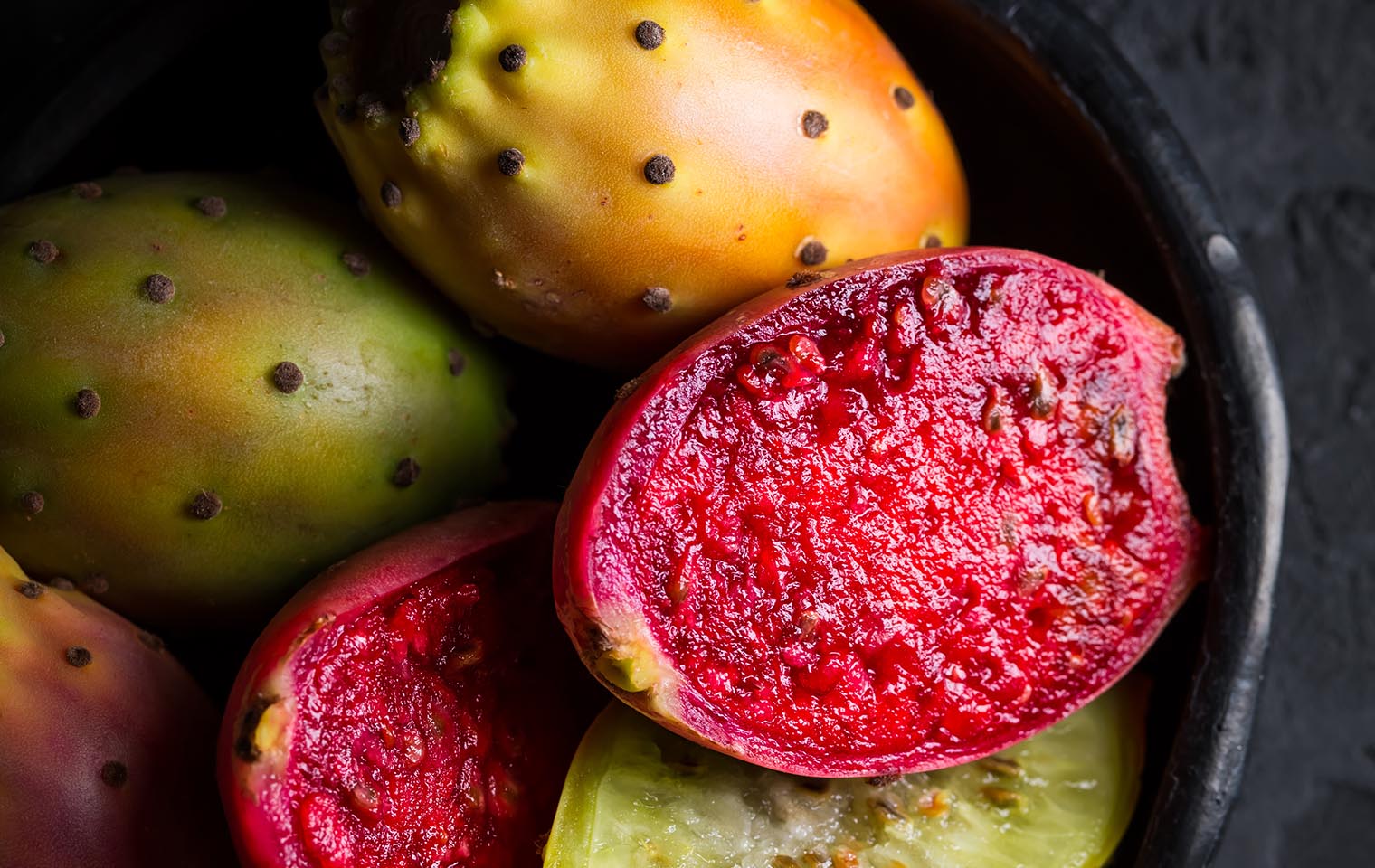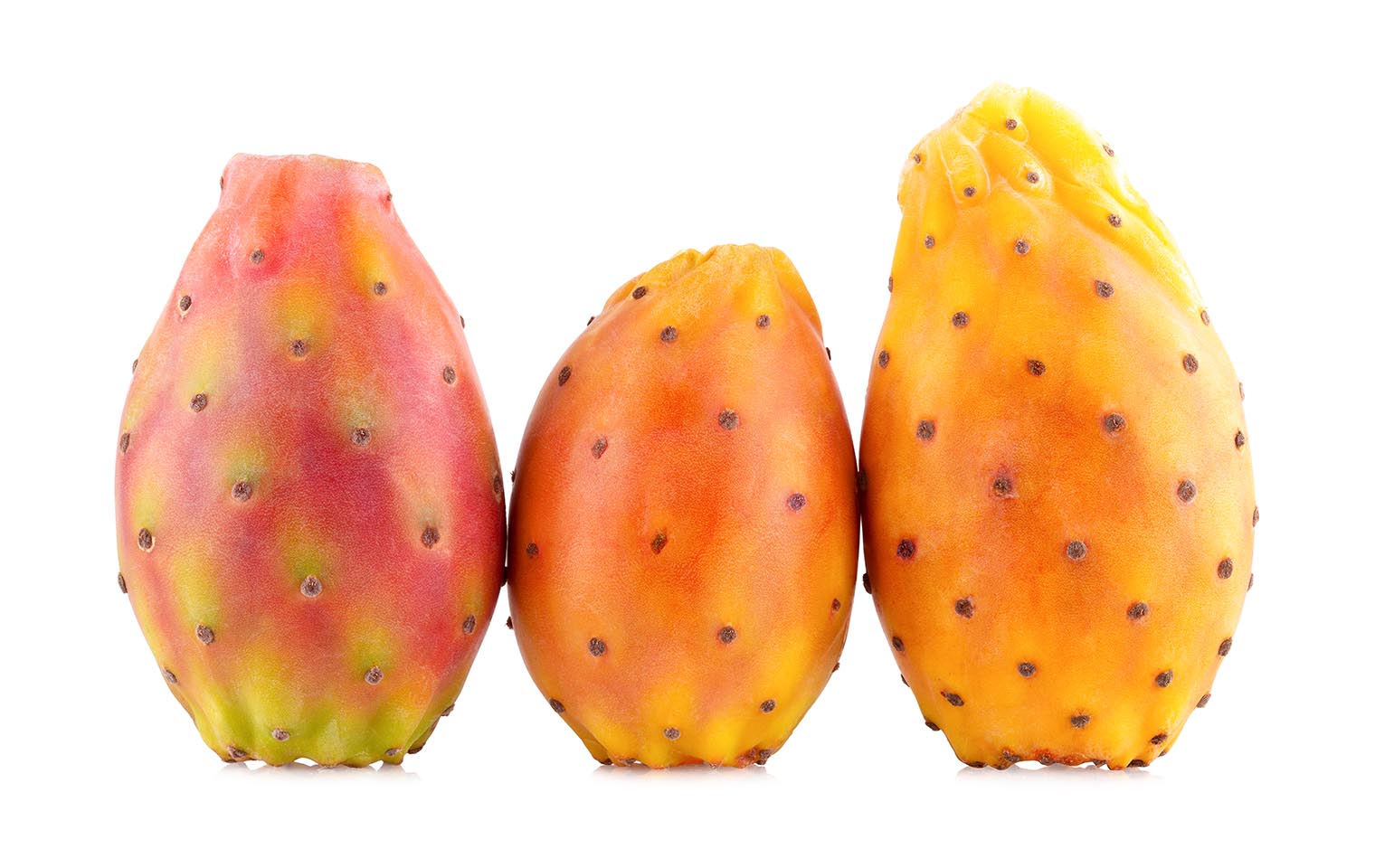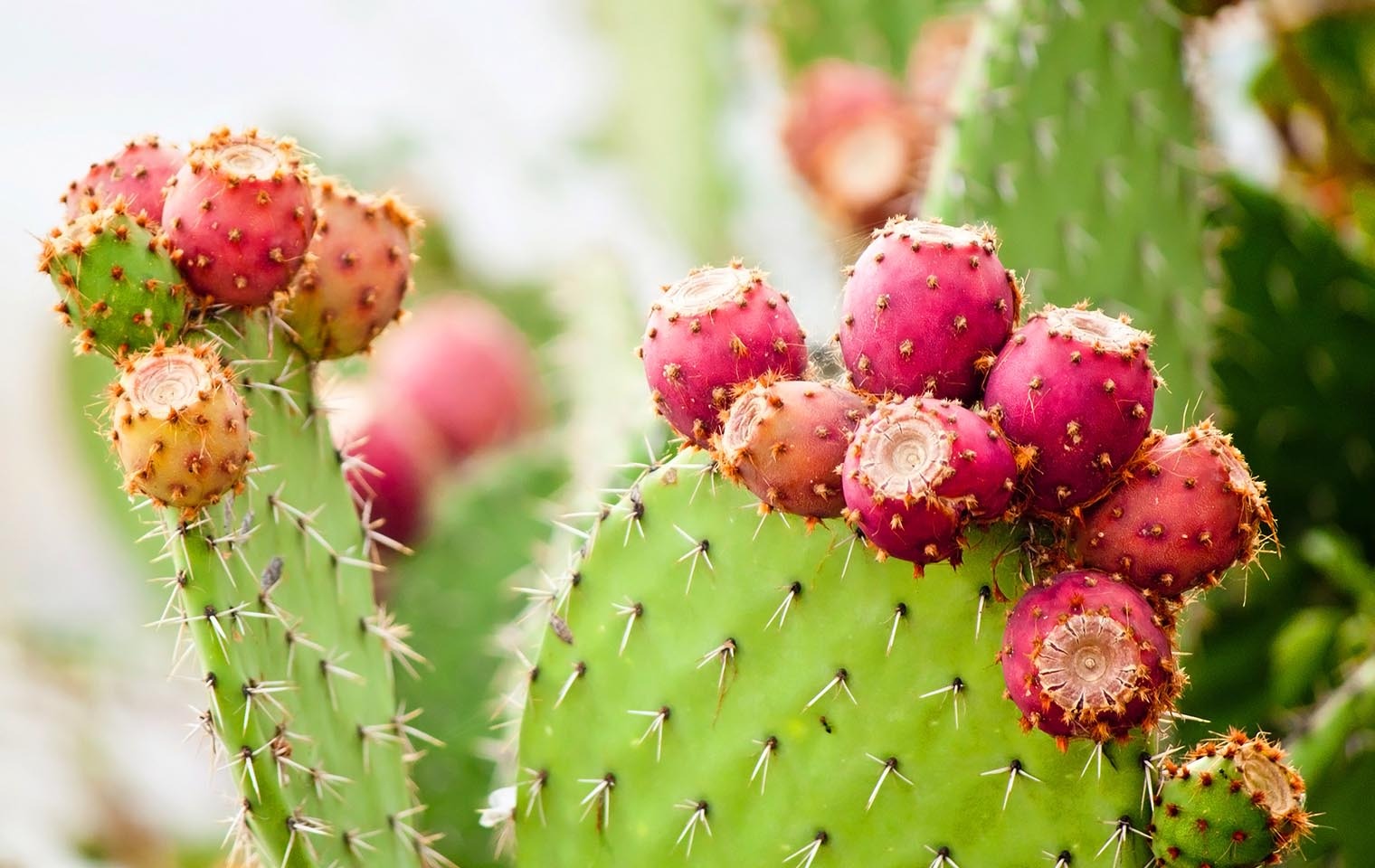Prickly pears - a thorny delight!
It’s loved for its juicy fruit and turksvystroop and -konfyt, and long used by farmers as “living fencing” and cattle feed. But it wasn’t always popular and is still considered a pest in certain parts of the country, most notably the Wilderness area.

A thorny start
The prickly pear is native to the semi-arid regions of central and southern America and believed to have been imported into the Western Cape from Mexico in the mid-1700s with the idea of using it as protective fencing around settlements. Because the plant had no natural enemies, it was flourishing by the 1800s, unfortunately to the detriment of farm and veld production in the areas it had invaded. To tackle the problem, in 1913, South Africa imported Chocheneal insect and in 1924, Cactoblastis cactorum moth, which then in turn had a negative effect on cultivated crops. Once under control, the species began to be used in other ways too and despite their thorny start, are today one of the most multi-use crops to be found and certainly one of the most widely used cactus plants in the country.
Difference between the ‘cactus pear’ and the ‘prickly pear’.
The term prickly pear is associated with the extremely spiny cultivars originally brought to South Africa by European settlers in 1772. They invaded massive tracts of natural veld, mainly in the Karoo and Eastern Cape, and had to be eradicated. These infestations have now been eliminated and are considered an invasive species that must be destroyed. However, farmers and gardeners can legally propagate the spineless cactus pear.
The most versatile cactus plant in the country
In many South American countries, no part of the plant is wasted and in South Africa, we are starting to see the benefits of the entire plant. Aside from providing fodder and fencing to farmers, the fruits can also be harvested for consumption, with cactus pears now stocked by many major retail chains, local fruit shops and farmers’ markets. The fruit is also used extensively in other food products, like juice, jam, jelly, and chutney; and the cladodes can be pickled and eaten in salads. Cactus pear fruit can even be made into beer, wine or liqueur and it’s probably just a matter of time before craft breweries and distillers latch onto cactus pear.
The fruit contains high levels of magnesium, iron, calcium and other nutrients, and its vitamin C content is higher than that of apples, pears, grapes and bananas. It contains high levels of phosphorus, fibre and the anti-oxidant betalains, shown to have antioxidant, anti-inflammatory and detoxification qualities. No wonder some cultures have long claimed that the cactus pear offers incredible medicinal benefits. In traditional South American folk medicine, the fruits have been used for diabetes; to treat burns, cuts and bruises, sunburn and windburn; to reduce inflammation and cholesterol levels; and alleviate cold symptoms, stomach ailments and constipation.
In 1974, GADI (the Grootfontein Agricultural Development Institute) imported 22 spineless Burbank (Opuntia ficus-indica) cultivars, as a drought-tolerant crop for the arid Karoo regions. Since then, almost 80 new varieties have been bred from them, and South Africa is the only country in the world – including the countries of origin – where Burbank cultivars are still found.

Farming with cactus pears
Recently there has been renewed interest in cactus pears by South African farmers, largely because climate change and drought have made them take a closer look at drought-resistant crops and investigate the cactus pear’s numerous uses. Farmers are growing cactus pears for various reasons, including fodder. Chopped-up cactus can actually be dried and milled - it provides the same feeding value as maize meal and can be stored for use during droughts or for supplementing fresh cactus leaves. Farmers are also engaging more in fresh fruit production and production aimed at the processing market. Currently, there’s a lot of interest in South Africa in using the cactus pear fruit to make oil for the cosmetics industry, where it is used in face cream products, as well as in ointments to help with burn wounds.
Cactus kraal manure makes a great organic fertiliser.
Harvesting is difficult and labour intensive, made even more so by the fact that the fruit ripen unevenly and must be optimally ripe when picked. Harvesting therefore happens continuously during the harvest season, which can span from early December to the end of April, and even in winter, depending on the cultivar.
Home grown cactus pears
If you are considering having a cactus pear plant in your garden or on your farm, just find a cutting or small plant and stick it in the ground! Cactus pears are really easy to grow and actually quite hard to destroy. It stands to reason then that the best way to grow them is to just let them be. Too much water gives cochineal a breeding ground to thrive, so it’s important never to overwater. The plants self-propagate by rooting their leaves into the ground and growing new plants within months, so plant them where there is a lot of space or keep your eye on them to stop them from taking over. You could also consider planting them along your boundary wall or fence as an extra security measure.
Some species of prickly pear have clusters of fine, barbed spines, which you may remember vividly if you ever had a nasty encounter with (the original) prickly pears as a child. These fine hairs are called glochids. They’re hard to see and even harder to remove once they get lodged in the skin. So, be careful if you harvest a cactus pear plant that has glochids and whatever you do, wear gloves and don’t harvest when it’s windy!
Although cactus pears can grow pretty much anywhere in the country, they really thrive in the arid to semi-arid conditions of the Eastern Cape, the Karoo and the Highveld.
In the kitchen
South Africans are most familiar with the mature green fruit, but the white, pink, yellow, and orange fruit are also making their way into the mainstream and are equally delicious! The stunning colours mean cactus pears put on a great show whether in salads, sauces or syrups. Cactus pears are equally at home in savoury dishes as in sweets, with some popular recipes including cactus pear and couscous salad; cactus pear braai marinade, cactus pear sorbet and many, many more. They work beautifully in cocktails and of course, can be enjoyed just as they are (and the way we all remember eating them as kids) – carefully peeled and eaten whole or sliced.
Cactus pears are readily available from around November to the end of June. Whether you buy them to enjoy in your kitchen, grow them in your garden for home use, or farm with them, cactus pears have a lot to offer, are easy to grow and extremely versatile. Despite having a controversial start in the country, they are now well loved, with their popularity increasing every year.

If your plants become infested with cochineal
Use a wetting agent, combined with contact and stomach insecticide. (The reason for the wetting agent is because prickly pear bushes have a waxy leaf and whatever you apply will run off). If you have no water restrictions in your area, you could try to loosen the cochineal with a high-pressure spray of water. Visit your local Agrimark Garden Zone for advice on how to treat cochineal infested plants.

CACTUS PEAR SYRUP
Ingredients
• 20 ripe cactus pears, peeled and chopped
• ¾ cup water
• ¼ cup lemon juice
• 1 cup brown sugar
Preparation
Place your chopped fruit and water into a large pot. Cook on medium heat for about 30 minutes, stirring occasionally. Use a blender or masher to blend down to a pulp, then strain through a sieve, saving the liquid and discarding the pulp and pips. Place the stained liquid back in the the pot, adding the sugar. Bring to the boil, then skim the foam from the top, add the lemon juice and decrease the heat to a gentle simmer. Simmer for around 45 minutes until it has reduced and is nice and syrupy.
Pour into sterilised jars, cool, seal and refrigerate. The syrup will keep for up to one month and can be used on waffles, pancakes, puddings or ice-cream, added to sparkling water, used in cocktails or added to salad dressings.



